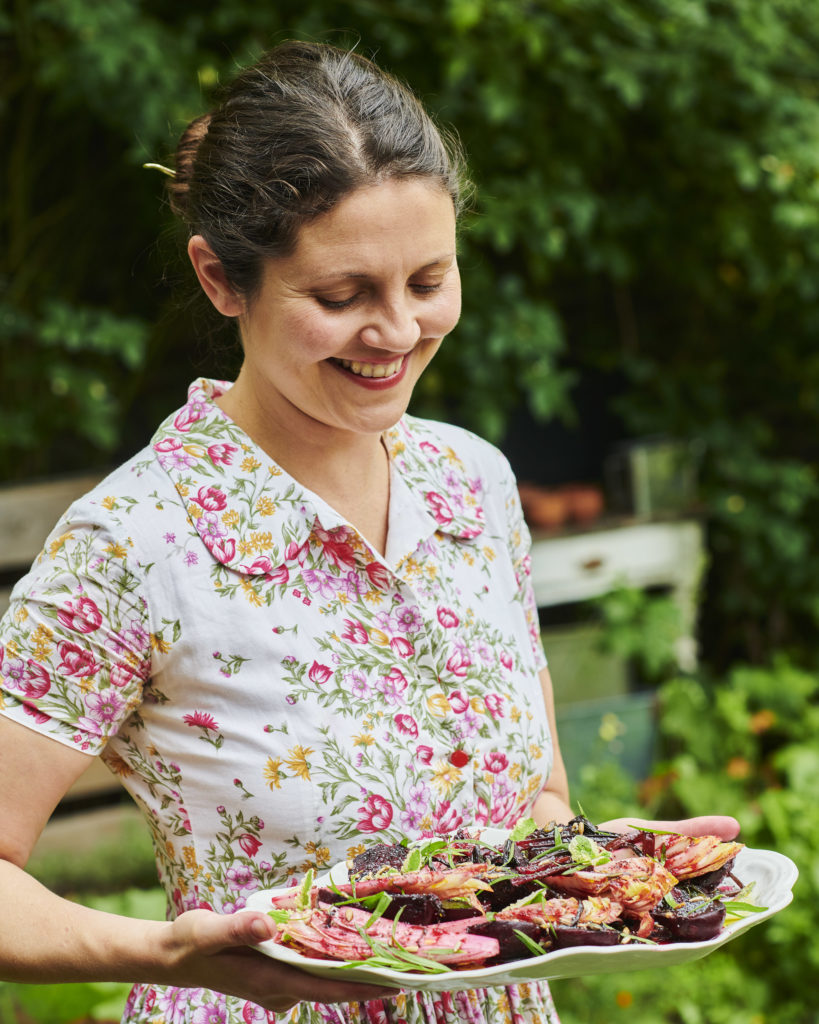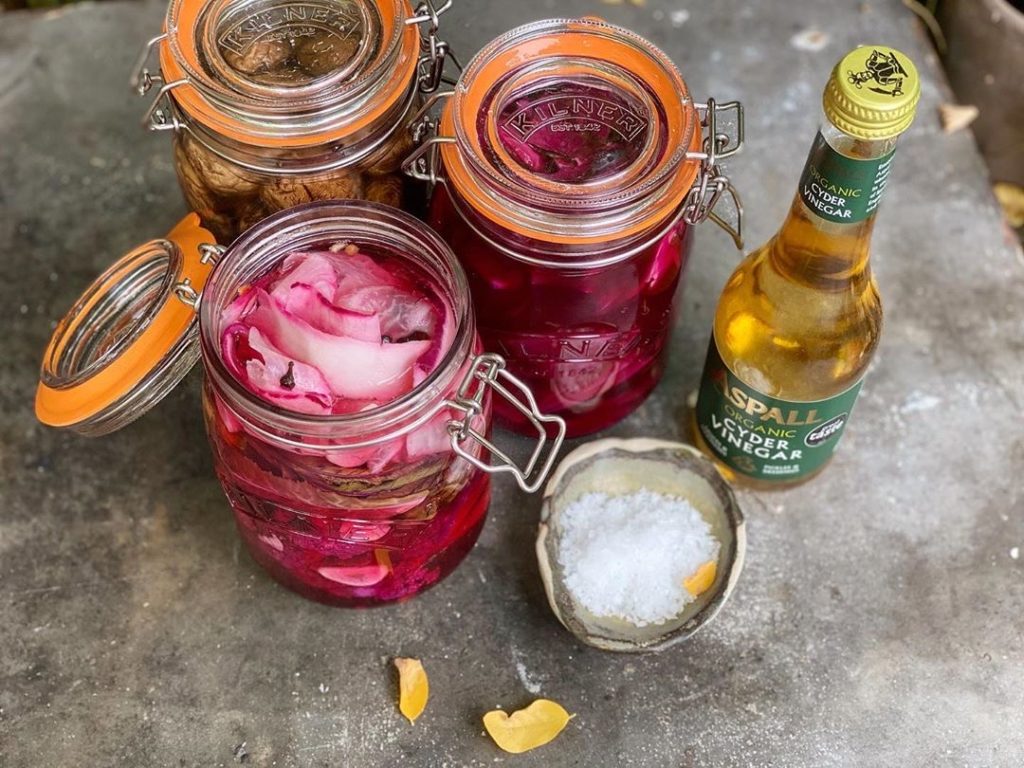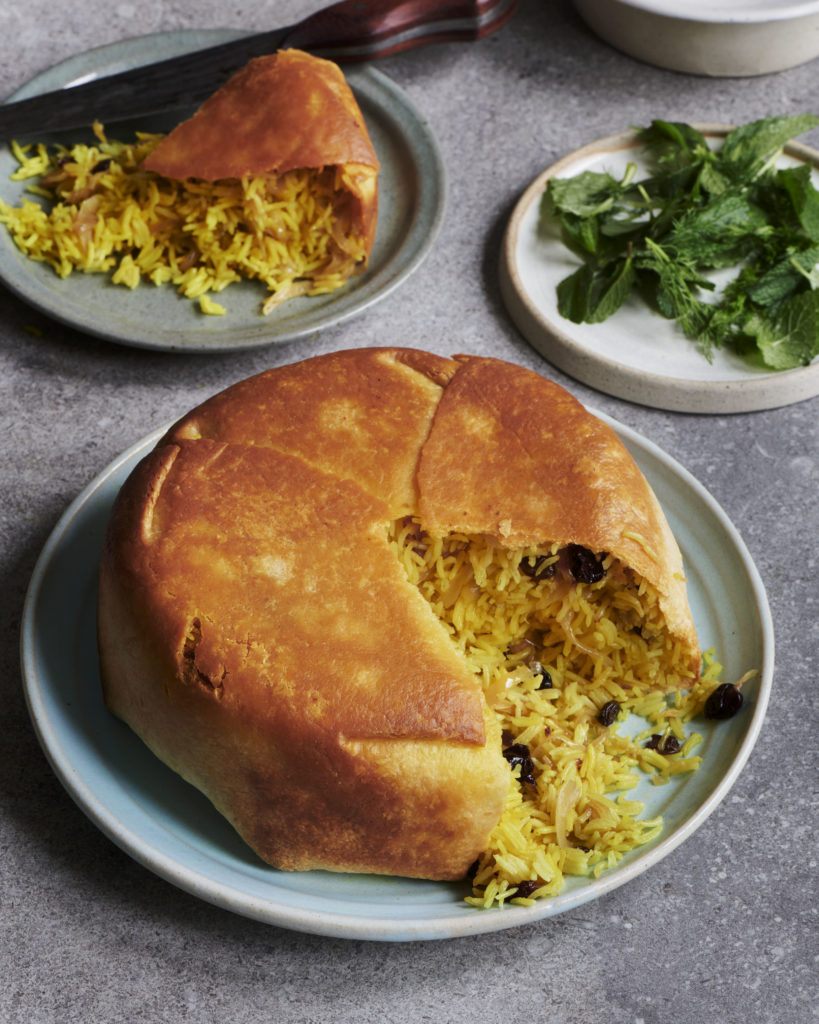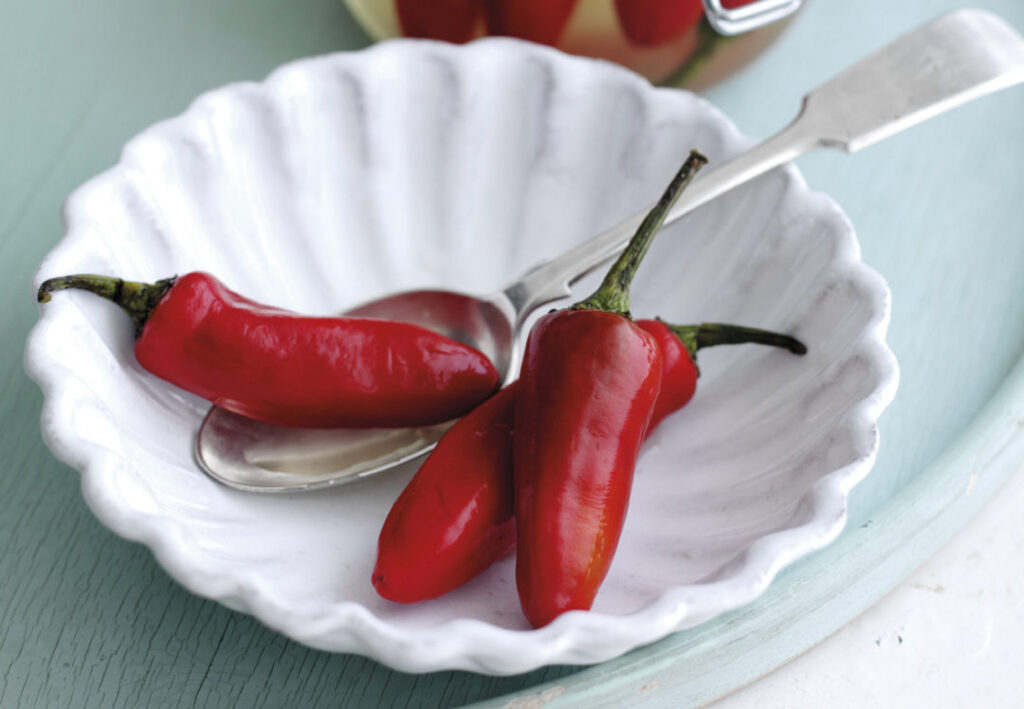We’ve teamed up with the talented Olia Hercules to create a refreshing and zingy salad, perfect for light lunch or as a side dish to a hearty meal like spatchcock chicken.
The salad contains all the flavours that Olia enjoys! Beetroot is paired with vibrant chicory wedges and bursts of orange segments to bring a gentle sweetness to the dish. The dish is inspired by an amazing recipe from Georgia called charkhali. The original dish is fantastic, and involves boiled beetroot tossed in a spicy sour plum puree, flavoured with pennyroyal mint, garlic, dill and Georgian spices. Olia goes a step further by charring the beetroot and cooking the plum sauce over fire, adding an amazing smokiness to the whole dish!
Here is how to boil beetroot…
Young beetroot with leaves work best here, if yours are large, simply boil them for much longer, until you can pierce them with a tip of a knife.
- To boil the beetroot, simply put them into a pan, whole, with the skins still on. If you have beetroots with decent leaves and stalks, do not throw those away! What Olia likes to do is bring a large pan over the flame of the hob and lower the beetroot roots inside and cover those with water, leaving the leaves to hang over the side of the pan. Leave the beetroot boils whilst the leaves hang out.
- Bring to a simmer and cook for about 40 minutes, dropping the leaves into the pot for the last 2 minutes of cooking. The beetroot is ready when you can pierce a knife through them quite easily. You want the beetroots to be al dente, but pierceable. Drop the leave into the pot for the last 2 minutes of cooking.
- Drain them when ready and run under a cold tap to cool them down. Then slice lengthways. This can be well in advance of your barbecuing, even a day or two before (just keep them in the fridge until ready).
How to make the plum sauce…
The early addition of Maldon Salt will help the plums to release their juices quickly, speeding up the sauce-making process. You can use other dark fruits too, including blackberries, sour cherries and blackcurrants. Just make sure to balance the sweetness according to how sweet the fruit is (i.e. if your blackberries are pretty sweet, omit the honey). You can use chilli flakes instead of fresh chilli too. As long as you have, sweet, sour, salty, slightly spicy flavours – your beetroot will sing and will turn the biggest beetroot hater into a beetroot lover!
- If your plums are not the ripest and tastiest, it is not the end of the world. Just chop them up into smaller pieces to help them cook quicker. If your plums are ripe and separate easily when twisted, simply do that – split them in half and take out the stones.
- Put the chopped plums into a cast iron pot (or another flame-proof pot) and pop it on the plancha or a barbecue. The embers should be barely glowing. Add 1 tbsp of Maldon Salt. This will help to draw out the juice out of the plums, speeding up the cooking process.
- Add the garlic and chillies to the plums as well as the dill, give it all a good stir and bring to the boil. The plums should break down and start bubbling beautifully fairly soon.
- Taste the sauce once it breaks down, add some honey or a touch of brown sugar if you feel like you want a little sweetness there. The original Georgian sauce is pretty sour so it’s all down to individual taste.
- The sauce needs about 20 minutes of cooking or until the plums break down properly.
Cooking the beetroot…
- While the sauce is cooking nicely, put the beetroots into a bowl and drizzle over the oil, toss well to coat.
- Put the beetroots and their stalks and leaves on the hot plancha or griddle pan or cast-iron pan set over the coals of a barbecue and cook them until gently charred.
Adding the chicory…
Most other bitter leaves, especially radicchio, will do beautifully here, but Olia likes to use chicory for both a hearty crunch and a slightly sweeter taste.
- Cut the chicory lengthways into elegant wedges and put them into the bowl where you oiled your beetroots.
- When the beetroot is nicely charred, add them to the chicory – don’t worry about the heat, it’s ok for the chicory to get that little bit of residual heat.
- If the plum sauce isn’t quite reduced enough yet, Olia likes to skim some of its juice off the top and pour it into the bowl with the chicory and the beets. Put as many as 5 tbsp in. You want the vegetables to be nicely coated in the spicy pink juices!
- Taste the beetroot or chicory and add more Maldon Salt if you feel it needs it.
Assembling the salad…
- Layer the beets and their leaves and the chicory on a beautiful platter or a large serving plate and sprinkle over the tarragon and mint or any other soft herbs that you really love or have at hand. Coriander, dill and basil make a beautiful trio.
- Drizzle over some more oil to make the salad glisten and serve alongside a barbecue feast.
How long does this recipe keep?
This salad keeps very well, especially if covered with more of the plum dressing (which will almost pickle it all!). Just cover the leftovers with more of the plum tkemali, put it into an air-tight container and keep for a up to 5 days.
What can you do with the leftover plum tkemali?
You can blitz the rest of the plum tkemali into a puree and keep in a small sterilised jar in the fridge for up to a week or even longer. It is good served as a condiment – with roast duck, pork, roasted vegetables and even fish. It also freezes beautifully.



